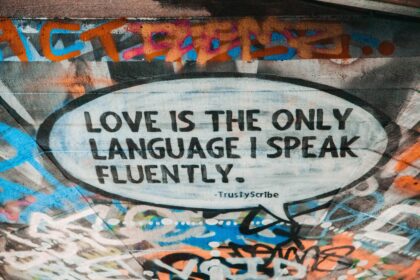Conflict is one of those inevitable parts of life that can shake us to our core, leaving wounds that feel too deep to heal. Yet, what if the way we face these moments of tension could transform not only the conflict itself but also our hearts? Navigating conflict with compassion is more than just a strategy-it’s a pathway to connection, understanding, and ultimately, healing. In this article, we’ll explore how approaching disagreements with respect and empathy can turn pain into growth, brokenness into repair, and distance into closeness. Because healing isn’t about winning or losing-it’s about coming back to one another with kindness, even when it feels hardest.
Understanding the Roots of Conflict to Foster Empathy
Conflicts often arise from deep-rooted fears, unmet needs, and past experiences that shape our reactions. When we pause to explore these hidden causes, we open a doorway to genuine empathy. It becomes easier to see beyond the surface clash and recognize the human being struggling underneath. Unlocking this understanding requires patience and a willingness to listen-not just with the ears, but with the heart. When we validate feelings rather than dismiss them, we create a space where healing can begin, even in the most charged situations.
To cultivate this empathetic approach, consider practicing the following:
- Active Listening: Focus fully on the speaker, reflecting back what you hear to confirm understanding.
- Ask Open-Ended Questions: Encourage sharing by inviting others to express their feelings and perspectives.
- Acknowledge Emotions: Validate the emotional experience behind the words without rushing to fix or judge.
By embracing these steps, conflict transforms from a battleground into a bridge, helping us connect more deeply and move toward reconciliation with compassion and respect.
Active Listening as a Bridge to Mutual Respect and Healing
True connection starts not with speaking, but with genuinely hearing the other person. When we engage in active listening, we create a sacred space where emotions can unfold without judgment. This practice isn’t about waiting for our turn to talk-it’s a conscious choice to absorb the essence of someone else’s experience. By doing so, we validate their feelings and foster trust, which is the foundation for mutual respect. Imagine the healing power unleashed when each voice in conflict feels honored and understood, turning discord into an opportunity for growth and reconciliation.
To cultivate this empathetic exchange, consider these simple yet transformative steps:
- Reflect back what you hear to confirm understanding
- Resist the urge to interrupt or formulate a response immediately
- Ask open-ended questions that invite deeper sharing
- Notice nonverbal cues like tone and body language
Approaching conflict with this attentive presence creates a fertile ground for healing-where respect blooms, wounds mend, and compassion guides every dialogue.
Communicating with Compassion to Transform Difficult Conversations
At the heart of every challenging dialogue lies an opportunity to deepen understanding and foster trust-and this potential only blooms when we engage with genuine empathy. Embracing vulnerability allows us to see beyond the conflict, recognizing the humanity in the other person. When we listen not just to respond, but to truly understand, our words carry the power to mend instead of wound. This delicate skill transforms heated exchanges into bridges, where respect anchors the conversation and healing begins.
Essential elements to cultivate compassionate communication include:
- Approaching the situation with a mindset of curiosity rather than judgment
- Validating emotions without immediately offering solutions or defenses
- Using “I” statements to express feelings and needs clearly and non-threateningly
- Pausing to breathe and reflect before responding, to ensure clarity and calmness
- Recognizing and honoring the shared desire for respect and resolution
By integrating these tools into difficult conversations, we shift the dynamic from confrontation to connection, allowing the true purpose of dialogue-to understand and be understood-to flourish. This path not only alleviates tension but nurtures a space where reconciliation and growth can take root, turning moments of despair into ones of profound healing.
Practical Steps to Rebuild Trust and Restore Connection
Rebuilding trust is a journey paved with conscious effort and genuine intention. Start by acknowledging past mistakes openly, without defensiveness or excuses. Transparency plays a crucial role-share your thoughts and feelings honestly, creating a safe space where vulnerability is met with empathy rather than judgment. Commit to consistency in your actions; trust blossoms when words and behaviors align over time. Small, thoughtful gestures can serve as powerful reminders that you are dedicated to healing, such as checking in regularly or offering a sincere apology without waiting to be asked.
Fostering connection requires patience and active listening. Practice emotional presence by fully engaging during conversations-put away distractions and make eye contact, showing the other person they are truly valued. Utilize “I” statements to express your experience without casting blame, inviting mutual understanding rather than defensiveness. Incorporate gentle rituals or shared activities that reaffirm your bond, creating positive memories that gradually overshadow the pain. Remember, rebuilding trust is not about rushing to fix everything at once but nurturing a heartfelt dialogue that honors both your needs and theirs.
Closing Remarks
In the end, navigating conflict with compassion isn’t just about smoothing over disagreements-it’s about honoring the shared humanity between us, even when emotions run high. Healing comes when we choose to listen deeply, speak kindly, and hold space for vulnerability without judgment. It’s in these moments of respect and understanding that bridges are strengthened and wounds begin to mend. Remember, healing takes time, patience, and a willingness to meet others where they are-even when it’s hard. So, as you step into your next conflict, carry compassion with you like a gentle guide, and watch how it transforms not just the situation, but the hearts involved. Because true respect isn’t just about resolving conflict-it’s about growing together beyond it.
















